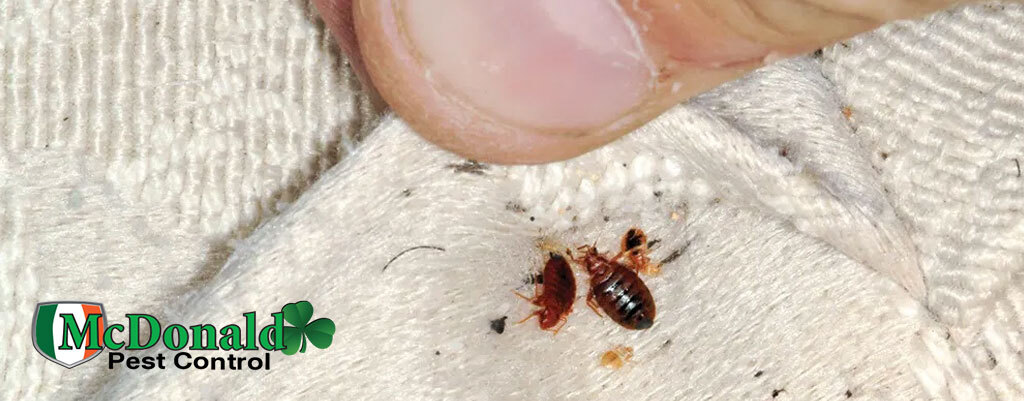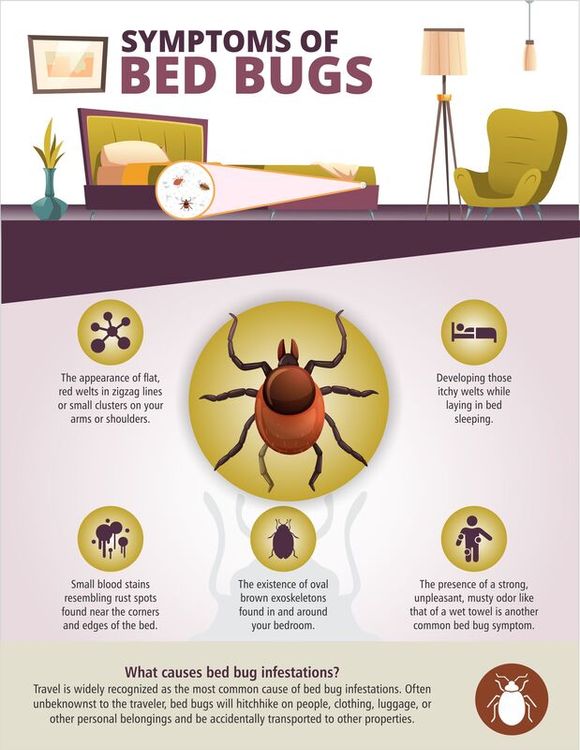Get Enlightened Regarding the Kinds Of Pest Control Methods and Their Benefits for Homeowners
Comprehending the numerous insect control methods readily available to property owners is essential for reliable insect management. Property owners that are well-informed can make tactical selections that not only address bug concerns yet likewise boost the general high quality of their living setting.
Chemical Pest Control Methods
Chemical bug control approaches are a crucial element of integrated bug monitoring techniques for house owners looking for efficient solutions to pest infestations. These approaches involve the application of chemical compounds developed to get rid of or prevent pests that intimidate individual home, wellness, and comfort. Usual chemicals used include insecticides, fungicides, herbicides, and rodenticides, each customized to target particular parasites.
The primary advantage of chemical parasite control is its quick effectiveness; several solutions supply immediate outcomes, reducing pest populaces dramatically quickly. Furthermore, developments in chemical formulas have actually led to items that are much more ecologically pleasant and have lower toxicity degrees for non-target microorganisms when applied correctly.

Organic Parasite Control Strategies
Natural pest control approaches have gained prestige as property owners seek safer and a lot more lasting options to traditional chemical strategies. Biological pest control strategies make use of natural killers, parasites, or pathogens to take care of pest populations properly. This approach is not only eco-friendly yet additionally minimizes the risk of injury to non-target types, including useful pests and wildlife.
One of one of the most typical biological control approaches involves introducing natural predators into the setting. Ladybugs can be used to manage aphid populaces, while nematodes target soil-dwelling bugs like grubs. Additionally, parasitoids-- microorganisms that reside on or within a host-- can be utilized to manage specific pest species by laying eggs inside them, inevitably causing their demise.
An additional method is the use of biopesticides, which are originated from natural materials such as minerals, plants, or microorganisms (bed bug exterminator). These products can effectively target bugs while positioning marginal danger to human beings and pets. Generally, organic insect control strategies provide homeowners with an effective methods of pest administration that straightens with eco-friendly principles, advertising a healthier living atmosphere while reducing dependence on artificial chemicals
Mechanical Bug Control Strategies
Mechanical insect control methods encompass a variety of techniques that physically stop or remove pests without using chemicals. These techniques are especially advantageous for property owners seeking eco-friendly choices while making certain the safety of their living spaces.
One common approach is making use of obstacles, such as webs, displays, and catches, which stop parasites from getting in homes or details areas. Setting up home window displays can efficiently keep pests out, while utilizing physical obstacles around yards can discourage bigger insects like rabbits or deer. Additionally, mechanical catches made use this link for rodents can catch and eliminate these insects without the demand for toxic compounds.
An additional efficient technique entails the usage of vacuums and brooms to get rid of bugs straight from surface areas. Regular cleansing and maintenance can significantly minimize pest populations by removing food sources and concealing places. Using gadgets like ultrasonic bug repellents can deter different bugs via sound waves that are unpleasant to them yet faint to humans.
Cultural Pest Control Practices
Cultural bug control techniques concentrate on web customizing the atmosphere and monitoring techniques to create conditions that are less favorable to pest invasions. These techniques are basic in maintaining a balanced environment and lowering the dependence on chemical interventions. By altering agricultural practices, homeowners can effectively discourage insects while promoting plant health and wellness.
One typical technique consists of plant turning, which interrupts the life process of pests by altering the kinds of plants grown in a particular area (bed bug exterminator). This not only reduces pest populations but also boosts dirt health. Additionally, intercropping-- planting varied plants in closeness-- can perplex bugs and minimize their capability to locate their preferred host plants
Water management is another crucial aspect of social techniques. Appropriate irrigation techniques can prevent standing water, which functions as a breeding place for insects and other insects. In addition, keeping tidiness in and around the home, such as frequently removing particles and food waste, can dramatically minimize insect attraction.
Incorporating these social methods into a detailed insect monitoring method allows home owners to produce a setting that naturally hinders bugs, thereby improving the effectiveness of other control approaches while advertising sustainable horticulture and landscaping.

Integrated Insect Management Approaches
Integrated Insect Administration (IPM) stands for an all natural method that integrates different methods to properly manage pest populations go to this web-site while reducing environmental effect. This approach integrates biological, cultural, physical, and chemical techniques to attain lasting parasite control. By analyzing pest populaces and their all-natural adversaries, IPM stresses tracking and determining bugs prior to carrying out control procedures.
Among the core principles of IPM is using thresholds, which establish the level of pest task that necessitates intervention. This makes certain that therapies are used only when required, decreasing the reliance on chemical pesticides. Organic control approaches, such as presenting natural predators or bloodsuckers, work in conjunction with cultural techniques like plant rotation and habitat adjustment to interfere with pest life process.
Additionally, IPM encourages using least-toxic chemical options when intervention is essential, focusing on products that pose marginal danger to non-target organisms and the setting. For home owners, embracing IPM approaches not just improves the effectiveness of insect management yet likewise advertises a much healthier living environment, promoting biodiversity and decreasing chemical direct exposure. Eventually, IPM empowers home owners to make educated decisions that balance bug control with ecological duty.
Verdict
In conclusion, understanding the various insect control methods empowers property owners to make educated decisions concerning pest administration. Each method-- chemical, biological, mechanical, cultural, and integrated pest management-- supplies distinct benefits that provide to different needs and choices.
Comprehending the different bug control approaches available to property owners is necessary for effective insect administration.Chemical pest control methods are a crucial part of incorporated insect management methods for home owners seeking reliable solutions to pest problems. Generally, biological pest control strategies offer homeowners with a reliable ways of pest administration that lines up with ecological concepts, promoting a much healthier living atmosphere while reducing dependence on synthetic chemicals.
Social pest control techniques focus on changing the environment and monitoring strategies to produce problems that are less helpful to pest infestations.In verdict, understanding the numerous insect control approaches empowers house owners to make informed decisions regarding pest administration.